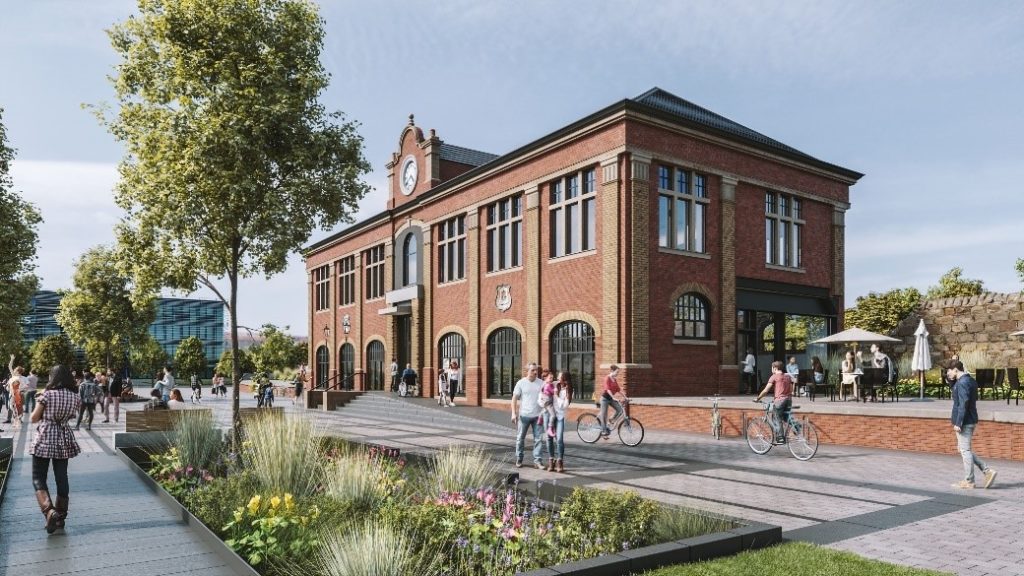
With the implementation of Schedule 3 in England due to happen early 2024, the importance of SuDS as part of a sustainable way to reduce surface water flooding, improve water quality and enhance environmental amenities and biodiversity has never been greater. Nikki Devon Brannan Johnston, project engineer at Will Rudd, has focused on water sensitive urban design since her academic years. Here she takes us through some of the recent changes to SuDS design and how engineers and planners south of the border can learn from best practice championed in Scotland.
SuDS mimic the natural hydrological cycle and can play a crucial role in mitigating the effects of growing urbanisation, not just in our towns and cities but in more sparsely populated areas too.
“The diverse nature of development sites now being utilised means that some surfaces are more permeable than others. This makes the conveyance and mitigation of additional surface water a challenge. With sites where the ground isn’t as permeable, surface water moves faster to our local watercourses and sewers and picks up more pollutants than if it was travelling through a green field site.
When CIRIA (the Construction Industry Research and Information Association) first introduced ‘The SuDS Manual’ in 2007, design was relatively straightforward with the focus primarily on water quality and quantity with amenity and biodiversity secondary. Even though a subsequent publication in 2015 put more focus on amenity and biodiversity, the real change and improvements in SuDS design has happened only in the last few years.
Clients and key stakeholders now have a greater understanding that there are real benefits to utilising surface water rather than just seeing it as a problem to be dealt with.
Some SuDS concepts now being implemented are still very new and can seem quite daunting to clients. However, I believe that as civil engineers we have a responsibility to guide and support them to make decisions in their developments that produce a high-quality end product, while having a better impact on our environment.”

Civil engineers regularly used heavily engineered SuDS components such as porous paving and filter trenches, which are simple to design. However, as Nikki explains, it’s now becoming more important for clients and their engineering partners to think outside the box.
“A big part of our role at Will Rudd is helping to educate and advise clients on how they can really start to use surface water, as opposed to just simply dealing with it. This does require some effort and collaboration but we are definitely seeing it becoming more widely adopted across our client base.”
Craig Johnston, senior engineer in Will Rudd’s Edinburgh team, played a crucial role in developing a green roof study on behalf of The City of Edinburgh Council which led the authority to produce its ‘Vision for Water Management’ guidance.
One of the first major SuDs projects to be constructed following the publication of The City of Edinburgh Council’s ‘Vision for Water Management’ was the Granton Gasworks Railway Station. This involved the refurbishment of the listed building to form an adaptable and creative multi-use space, as well as development of the external space to create an exciting Public Realm.
This exciting project harnessed the aspirations set out in the council’s guidance with a focus on using multi-use rain gardens and detention basins, alongside swales to ensure the surface water is a visible asset above ground, instead of heavily engineered underground storage structures. Will Rudd collaborated with ADP Architecture on the successful design of rain gardens that not only treat the surface water and reduce run off, they are also designed to allow overland storage during periods of extreme rainfall.
“The Granton Gasworks Railway Station site really does champion water sensitive urban design techniques as it allows surface water to be a visible asset.
“As a design team, we managed to significantly reduce underground piped systems by using open dished channels in the hard landscaping to convey water to these raingardens.”
With Scotland having had a head start on the design and implementation of SuDS, because of the guidance in place from the likes of SEPA and Scottish Water, it’ll be important for Will Rudd’s English counterparts to quickly get up to speed. For the first time, SuDS will have to be given specific consideration at the feasibility stages of a project, rather than at the end once a site layout is developed.
“It’s going to take a massive effort but it’s also an exciting time as engineers now have the opportunities to be way more creative in SuDS design as it will be something which has to be addressed much earlier in a project’s timeline.”









